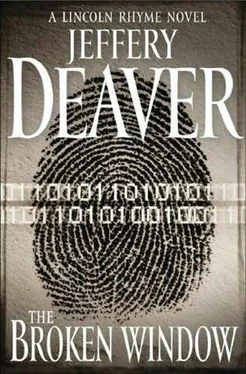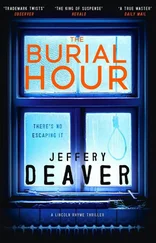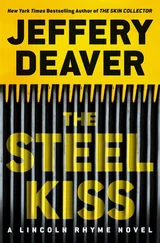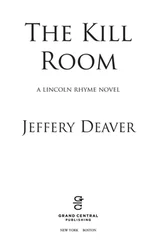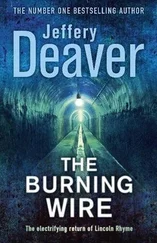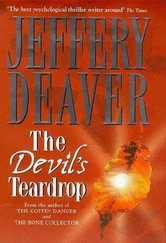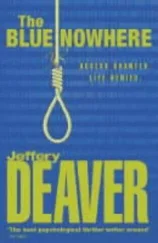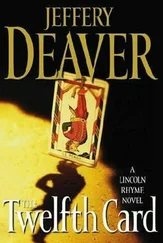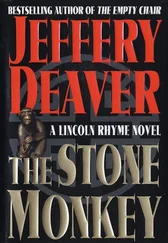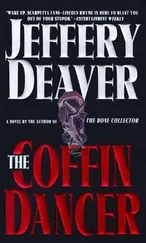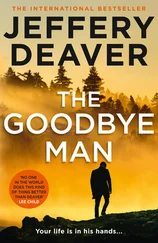Sachs said, “Got an idea. Let me call my computer expert.”
“Who, that guy at Computer Crimes?” Sellitto asked.
“No, somebody even better than him.”
She picked up the phone and dialed a number. “Pammy, hi. Where are you?…Good. I’ve got an assignment. Go online for a Web chat. We’ll do audio by phone.”
Sachs turned to Cooper. “Can you boot up your webcam, Mel?”
The tech typed and a moment later his monitor filled with an image of Pam’s room at her foster parents’ house in Brooklyn. The face of the pretty teenager appeared as she sat down. The image was slightly distorted by the wide-angle lens.
“Hi, Pam.”
“Hi, Mr. Cooper” came the lilting voice through the speakerphone.
“I’ll take over,” Sachs said and replaced Cooper at the keyboard. “Honey, we’ve found a picture and we think it came from the Internet. Could you take a look and tell us if you know where?”
“Sure.”
Sachs held up the sheet to the webcam.
“It’s kind of glary. Can you take it out of the plastic?”
The detective pulled on latex gloves and carefully slipped the sheet out, held it up again.
“That’s better. Sure, it’s from OurWorld.”
“What’s that?”
“You know, a social-networking site. Like Facebook and MySpace. It’s the hot new one. Everybody’s on it.”
“You know about those, Rhyme?” Sachs asked.
He gave a nod. Curiously, he’d been thinking about this recently. He’d read an article in The New York Times about networking sites and virtual existence worlds like Second Life. He’d been surprised to learn that people were spending less time in the outside world and more in the virtual-from avatars to these social-networking sites to telecommuting. Apparently teenagers today spent less time out of doors than in any other period in U.S. history. Ironically, thanks to an exercise regimen that was improving his physical condition and his changing attitudes, Rhyme himself was becoming less virtual and was venturing out more. The dividing line between abled and disabled was blurring.
Sachs now asked Pam, “You can tell for sure it’s from that site?”
“Yeah. They’ve got that special border. If you look close it’s not just a line; it’s little globes, like the earth, over and over again.”
Rhyme squinted. Yes, the border was just as she’d described it. He thought back, recalling OurWorld from the article. “Hello, Pam…there are a lot of members, aren’t there?”
“Oh, hi, Mr. Rhyme. Yeah. Like, thirty or forty million people. Whose realm is that one?”
“Realm?” Sachs asked.
“That’s what they call your page. Your ‘realm.’ Who is she?”
“I’m afraid she was killed today,” Sachs said evenly. “That’s the case I told you about earlier.”
Rhyme wouldn’t have mentioned the murder to a teenager. But this was Sachs’s call; she’d know what to share and what not to.
“Oh, I’m sorry.” Pam was sympathetic but not shocked or dismayed by the hard truth.
Rhyme asked, “Pam, can anybody log on and get into your realm?”
“Well, you’re supposed to join. But if you don’t want to post anything or host your own realm you can crack in just to look around.”
“So you’d say that the man who printed this out knows computers.”
“Yeah, he’d have to, I guess. Only he didn’t print it out.”
“What?”
“You can’t print or download anything. Even with the print screen command. There’s a filter on the system-to prevent stalkers, you know. And you can’t crack it. It’s like what protects copyrighted books online.”
“Then how did he get the picture?” Rhyme asked.
Pam laughed. “Oh, he probably did what we all do at school if we want a shot of a cute guy or some weird Goth chick. We just take a picture of the screen with a digital camera. Everybody does that.”
“Sure,” Rhyme said, shaking his head. “Never occurred to me.”
“Oh, don’t worry, Mr. Rhyme,” the girl said. “A lot of times people miss the obvious answer.”
Sachs glanced at Rhyme, who smiled at the girl’s reassurance. “Okay, Pam. Thanks. I’ll see you later.”
“‘Bye!”
“Let’s fill in the portrait of our friend.”
Sachs picked up the marker and stepped to the whiteboard.
UNSUB 522 PROFILE
· Male
· Possibly smokes or lives/works with someone who does, or near source of tobacco
· Has children or lives/works near them or near source of toys
· Interest in art, coins?
· Probably white or light-skinned ethnic
· Medium build
· Strong-able to strangle victims
· Access to voice-disguise equipment
· Possibly computer literate; knows OurWorld. Other social-networking sites?
· Takes trophies from victims. Sadist?
· Portion of residence/workplace dark and moist
NONPLANTED EVIDENCE
· Dust
· Old cardboard
· Hair from doll, BASF B35 nylon 6
· Tobacco from Tareyton cigarettes
· Old tobacco, not Tareyton, but brand unknown
· Evidence of Stachybotrys Chartarum mold
Rhyme was looking over the details when he heard Mel Cooper laugh. “Well, well, well.”
“What?”
“This is interesting.”
“Be specific. I don’t need interesting. I need facts.”
“It’s still interesting.” The lab man had been shining a bright light on the slit-open spine of Robert Jorgensen’s book. “You were thinking the doctor was crazy, talking about tracking devices? Well, guess what? Oliver Stone may have a movie here-there is something implanted in it. In the spine tape.”
“Really?” Sachs said, shaking her head. “I thought he was nuts.”
“Let me see,” Rhyme said, his curiosity piqued and skepticism on temporary hold.
Cooper moved a small high-definition camera closer to the examining table and hit the book with an infrared light. It revealed underneath the tape a tiny rectangle of crisscrossed lines.
“Take it out,” Rhyme said.
Carefully Cooper slit the spine tape and removed what appeared to be an inch-long piece of plasticized paper printed with what looked like computer circuit lines. Also, a series of numbers and the manufacturer’s name, DMS, Inc.
Sellitto asked, “The fuck is it? Really a tracking device?”
“I don’t see how. There’s no battery or power source that I can find,” Cooper said.
“Mel, look up the company.”
A fast business search revealed it was Data Management Systems, based outside Boston. He read a description of the outfit, one division of which manufactured these little devices-known as RFID tags, for radio frequency identification.
“I’ve heard about those,” Pulaski said. “It was on CNN.”
“Oh, the definitive source for forensic knowledge,” Rhyme said cynically.
“No, that’s CSI, ” Sellitto said, drawing another aborted laugh from Ron Pulaski.
Sachs asked, “What does it do?”
“This is interesting.”
“Again, interesting.”
“Essentially it’s a programmable chip that can be read by a radio scanner. They don’t need a battery; the antenna picks up the radio waves and that gives them enough juice to work.”
Sachs said, “Jorgensen was talking about breaking off antennas to disable them. He also said you could destroy some of them in a microwave. But that one”-she gestured-“he couldn’t nuke. Or so he said.”
Cooper continued, “They’re used for inventory control by manufacturers and retailers. In the next few years nearly every product sold in the U.S. will have its own RFID tag. Some major retailers already require them before they’ll stock a product line.”
Sachs laughed. “That’s just what Jorgensen was telling me. Maybe he wasn’t as National Enquirer as I thought.”
Читать дальше
